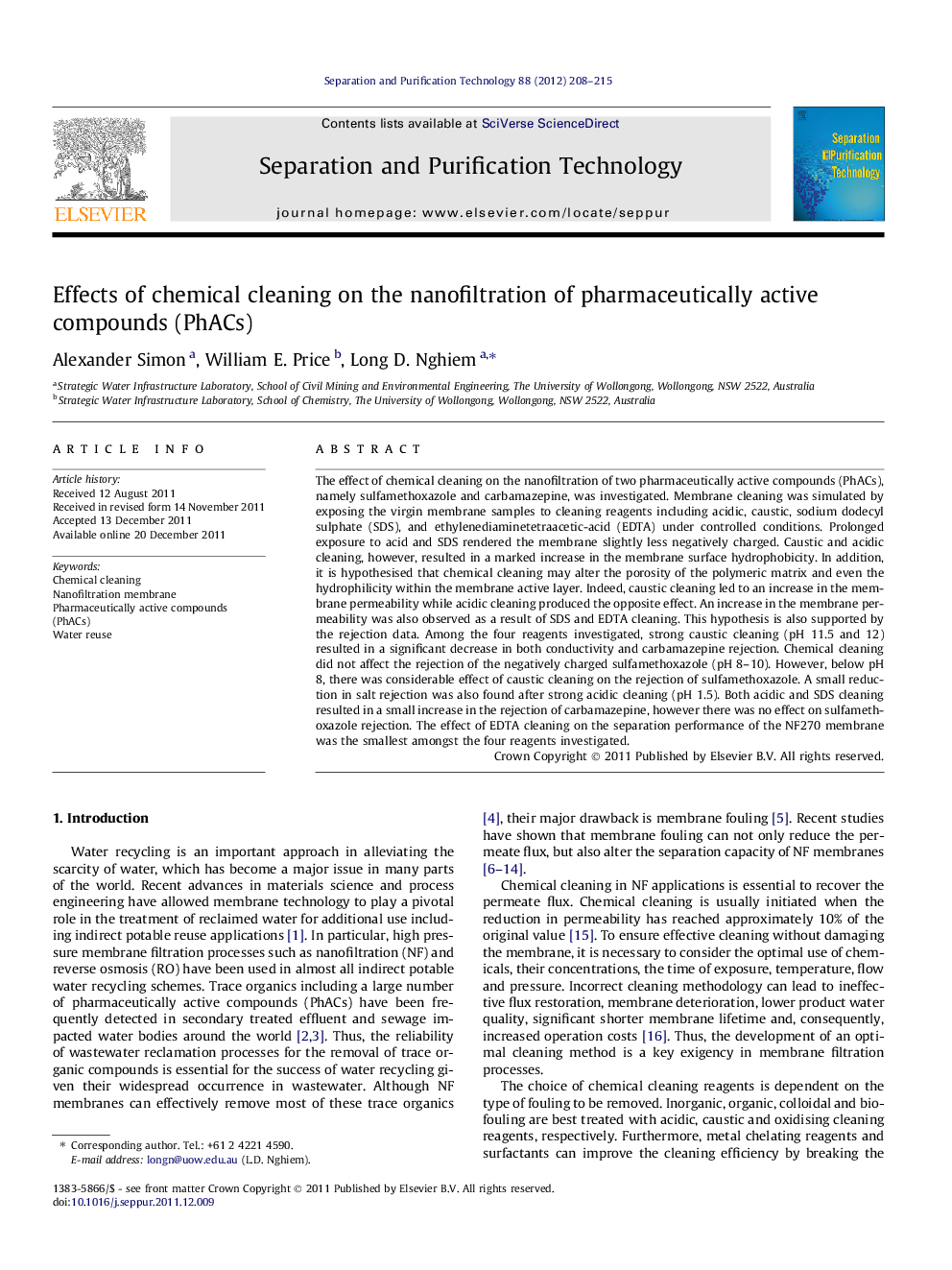| کد مقاله | کد نشریه | سال انتشار | مقاله انگلیسی | نسخه تمام متن |
|---|---|---|---|---|
| 642315 | 1457031 | 2012 | 8 صفحه PDF | دانلود رایگان |

The effect of chemical cleaning on the nanofiltration of two pharmaceutically active compounds (PhACs), namely sulfamethoxazole and carbamazepine, was investigated. Membrane cleaning was simulated by exposing the virgin membrane samples to cleaning reagents including acidic, caustic, sodium dodecyl sulphate (SDS), and ethylenediaminetetraacetic-acid (EDTA) under controlled conditions. Prolonged exposure to acid and SDS rendered the membrane slightly less negatively charged. Caustic and acidic cleaning, however, resulted in a marked increase in the membrane surface hydrophobicity. In addition, it is hypothesised that chemical cleaning may alter the porosity of the polymeric matrix and even the hydrophilicity within the membrane active layer. Indeed, caustic cleaning led to an increase in the membrane permeability while acidic cleaning produced the opposite effect. An increase in the membrane permeability was also observed as a result of SDS and EDTA cleaning. This hypothesis is also supported by the rejection data. Among the four reagents investigated, strong caustic cleaning (pH 11.5 and 12) resulted in a significant decrease in both conductivity and carbamazepine rejection. Chemical cleaning did not affect the rejection of the negatively charged sulfamethoxazole (pH 8–10). However, below pH 8, there was considerable effect of caustic cleaning on the rejection of sulfamethoxazole. A small reduction in salt rejection was also found after strong acidic cleaning (pH 1.5). Both acidic and SDS cleaning resulted in a small increase in the rejection of carbamazepine, however there was no effect on sulfamethoxazole rejection. The effect of EDTA cleaning on the separation performance of the NF270 membrane was the smallest amongst the four reagents investigated.
► Chemical cleaning could influence membrane properties and separation efficiency.
► The effect of caustic cleaning was most profound.
► Caustic cleaning resulted in an increase in permeability and decrease in rejection.
► The effects on the rejection of neutral and ionisable compound were different.
► Surfactant and EDTA cleaning also resulted in an increase in permeability.
Journal: Separation and Purification Technology - Volume 88, 22 March 2012, Pages 208–215